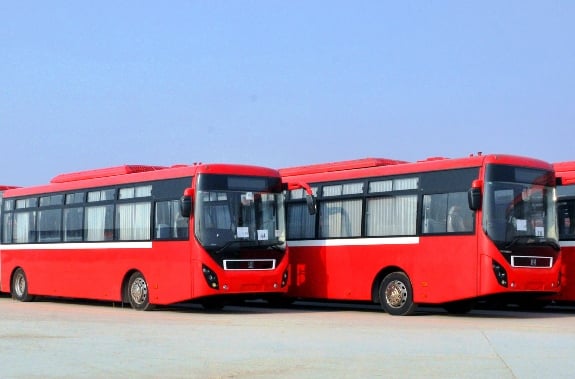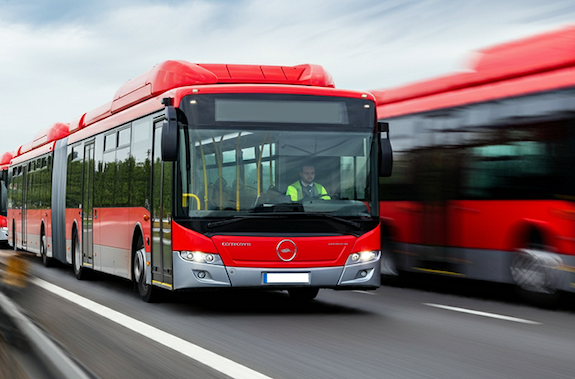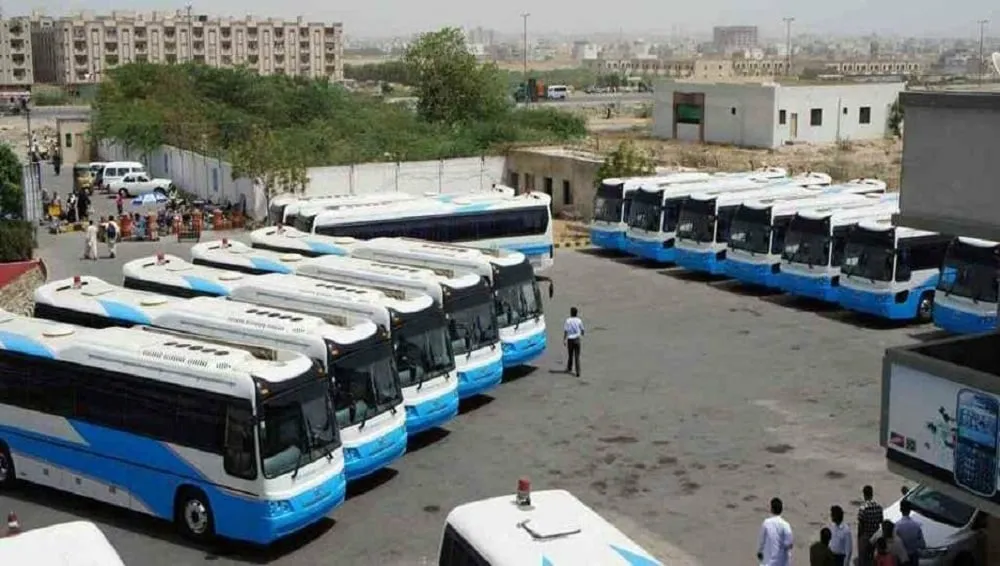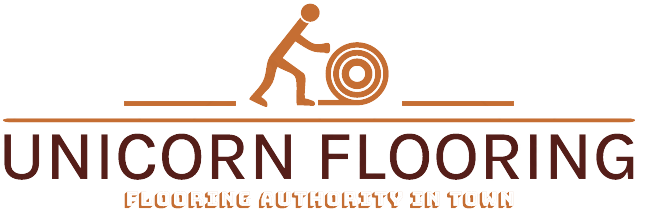Bus Terminal Flooring in Pakistan
Bus terminals are among the busiest public spaces in Pakistan’s transport infrastructure. Thousands of passengers walk, roll luggage, board, and disembark buses daily. Meanwhile, heavy vehicles constantly enter and exit, causing vibration, oil drips, and tire friction. In such conditions, durable and easy-to-maintain flooring is not a luxury — it’s essential for safety, hygiene, and long-term cost control.
Whether for new projects in cities like Karachi, Lahore, and Islamabad or renovation of existing terminals, choosing the right flooring system directly affects the performance, lifespan, and aesthetics of the terminal.
This comprehensive guide explores flooring types, design considerations, installation methods, maintenance practices, and cost factors for bus terminal flooring in Pakistan.
Why Flooring Matters in Bus Terminals?
Bus terminals face unique challenges that make flooring selection critical. A poor flooring choice can lead to frequent maintenance, accidents, and aesthetic deterioration within months.
Here’s why flooring deserves careful attention in terminal projects:
- Heavy Foot Traffic: Continuous pedestrian flow, especially during peak travel seasons.
- Vehicle Load: Constant movement of buses, service vehicles, and baggage trolleys.
- Oil and Fuel Spills: Diesel drips, grease, and hydraulic fluid exposure are common.
- Cleaning and Hygiene: Public spaces require frequent washing and disinfecting.
- Slip Resistance: Wet floors during rain or cleaning can cause accidents.
- Maintenance Costs: Terminals must remain operational — downtime is costly.
Given these factors, flooring must combine strength, slip resistance, stain resistance, and ease of cleaning while maintaining a clean, professional appearance.
Key Requirements for Bus Terminal Flooring
Before selecting a flooring system, planners and contractors should define the performance requirements. The ideal bus terminal flooring should offer:


1. High Load-Bearing Strength
The floor must withstand the weight of buses, tires, and maintenance equipment without cracking or deforming.
2. Slip Resistance
To ensure public safety, especially in wet or oily conditions, anti-slip textures or additives are essential.
3. Chemical and Stain Resistance
Diesel fuel, oil, and cleaning agents should not stain or damage the surface.
4. Easy Maintenance
Public facilities need quick and economical cleaning. Seamless and non-porous flooring minimizes dirt accumulation.
5. Aesthetic Appeal
An attractive, well-marked floor contributes to positive passenger experience and helps with wayfinding.
6. Longevity and Cost-Efficiency
The system should provide long service life with minimal maintenance, balancing initial investment and lifecycle cost.
Best Flooring Options for Bus Terminals in Pakistan
Several flooring materials are suitable for terminal applications. Below are the most commonly recommended systems for Pakistan’s climatic and operational conditions.
1. Epoxy Flooring
Overview
Epoxy flooring is a resin-based system applied over concrete surfaces to create a seamless, glossy, and chemical-resistant finish. It’s one of the most popular options for terminals and parking areas.
Advantages
- High compressive and tensile strength.
- Resistant to oil, fuel, and cleaning chemicals.
- Easy to clean and maintain.
- Available in slip-resistant textures.
- Can be customized with markings and colors for different zones.
Recommended For
Indoor terminal halls, maintenance areas, passenger waiting areas, and parking zones.
Limitations
Epoxy can yellow under direct sunlight and may need UV-resistant topcoats for outdoor exposure.
2. Polyurethane (PU) Flooring
Overview
PU flooring offers flexibility, UV stability, and chemical resistance. It performs well under dynamic load conditions and temperature fluctuations.
Advantages
- UV-resistant and color-stable (ideal for open-air terminals).
- Better flexibility than epoxy; absorbs minor substrate movements.
- Available in matte and textured finishes for anti-slip properties.
- Handles vehicle vibration and temperature changes.
Recommended For
Outdoor platforms, open bus bays, rooftop terminals, and semi-exposed waiting areas.
Limitations
Slightly higher cost than epoxy, but the added durability makes it worthwhile.
3. Urethane Concrete Flooring (PU Concrete)
Overview
Urethane concrete (also called PU concrete) combines cement and resin for extreme strength and chemical resistance. It is used where heavy vehicles operate continuously.
Advantages
- Exceptional mechanical and thermal resistance.
- Withstands fuel spills and cleaning chemicals.
- Excellent for high-impact areas like bus entry and exit points.
- Non-slip and long-lasting (10–20 years lifespan).
Recommended For
Maintenance workshops, fueling zones, and loading/unloading bays.
Limitations
Higher upfront cost, requires professional installation.
4. Polished Concrete Flooring
Overview
Polished concrete involves grinding and densifying the surface of concrete slabs to achieve a glossy, dust-free, and durable finish.
Advantages
- Economical for large areas.
- Easy to maintain and clean.
- Reflective finish improves lighting and visibility.
- Long lifespan if sealed properly.
Recommended For
Passenger halls, ticketing counters, corridors, and indoor walkways.
Limitations
Not suitable for areas exposed to oil or fuel unless properly sealed; can be slippery when wet.
5. Vinyl or Rubber Flooring (Passenger Zones)
Overview
For indoor waiting lounges and ticket counters, vinyl or rubber tiles offer comfort, design flexibility, and easy maintenance.
Advantages
- Comfortable underfoot and reduces noise.
- Slip-resistant surface.
- Available in decorative colors and patterns.
- Easy replacement of damaged sections.
Recommended For
Passenger waiting halls, ticket counters, and staff offices.
Limitations
Not ideal for heavy vehicle zones; best used in pedestrian-only areas.
Comparison of Flooring Options for Bus Terminals
| Type of Flooring | Recommended Areas | Key Features |
|---|---|---|
| Epoxy Flooring | Indoor halls, parking bays | Seamless, chemical-resistant, easy to clean |
| PU (Polyurethane) Flooring | Outdoor & semi-exposed terminals | UV-resistant, flexible, weatherproof |
| Urethane Concrete Flooring | Heavy-duty loading & fueling areas | Impact-resistant, long-lasting |
| Polished Concrete | Passenger halls, corridors | Cost-effective, reflective, smooth |
| Vinyl / Rubber Flooring | Waiting lounges, offices | Comfortable, noise-reducing, slip-resistant |
Design Considerations for Bus Terminal Flooring
1. Zoning and Color Coding
Different functional areas should have distinct colors or markings:
- Yellow/Red zones: Bus lanes or danger zones.
- Green zones: Passenger waiting areas.
- Blue/White lines: Pathways and queue lines.
2. Drainage
Terminals must have floor slopes and drains to prevent water pooling, especially in washing bays and outdoor platforms.
3. Slip Resistance
Aggregate broadcast or anti-slip coatings ensure safety even in wet conditions.
4. Noise Reduction
Rubber or vinyl floors reduce footfall noise in waiting halls.
5. Lighting and Reflectivity
Glossy epoxy or polished concrete enhances ambient light, reducing energy costs.
6. Accessibility
Smooth transitions between zones ensure accessibility for wheelchairs and trolleys.
Installation Process
Proper installation is vital for flooring longevity. Even the best materials can fail without professional surface preparation and application.
Concrete Assessment
Check slab strength, moisture level, and surface condition. Weak areas are repaired using epoxy mortar.
Surface Preparation
Shot blasting or diamond grinding ensures a rough surface profile for bonding (CSP 3–5).
Priming
Apply epoxy or PU primer to seal pores and improve adhesion.
Base Layer Application
Depending on the system, install epoxy mortar, PU screed, or urethane concrete base.
Finishing and Topcoat
Apply anti-slip topcoat, color coats, and markings. PU or polyaspartic topcoats improve UV and abrasion resistance.
Step 6: Curing and Inspection
Allow adequate curing (24–72 hours). Conduct adhesion and slip tests before opening to traffic.

Maintenance of Bus Terminal Flooring
Maintenance is key to longevity and safety in high-traffic environments.
Daily Cleaning
Use auto scrubbers with neutral pH cleaners to remove dust, oil, and dirt.
Spill Management
Clean diesel and oil spills immediately using absorbent pads.
Periodic Inspection
Inspect for cracks, delamination, or surface wear every 6–12 months.
Recoating
Apply fresh topcoat layers every 3–5 years depending on wear conditions.
Repairs
Use epoxy patch kits or fast-curing mortars for localized damage.
Marking Repainting:
Repaint directional lines and safety markings annually to maintain visibility.
Cost Factors in Pakistan
The overall flooring cost depends on multiple variables. Below is a simplified breakdown:
| Cost Factor | Impact on Budget |
|---|---|
| Flooring Material | Main cost (Epoxy, PU, Urethane, Vinyl) |
| Surface Preparation | Adds cost but ensures durability |
| Floor Thickness | Thicker = more durable but higher material use |
| Area Size | Larger areas reduce per sq. ft. cost |
| Additives & Features | Anti-slip, ESD, UV coating increase cost |
| Labor & Expertise | Certified installers ensure better performance |
Approximate Costs (as of 2025 in Pakistan):
- Epoxy Flooring: PKR 600–1,200 per sq. ft.
- PU Flooring: PKR 800–1,500 per sq. ft.
- Urethane Concrete: PKR 1,200–2,500 per sq. ft.
- Polished Concrete: PKR 400–800 per sq. ft.
- Vinyl Flooring: PKR 350–700 per sq. ft.
(Prices vary based on material source, thickness, and region.)
Common Problems and Solutions
| Problem | Cause | Solution |
|---|---|---|
| Cracks in flooring | Poor surface preparation | Proper grinding, priming, and joint treatment |
| Slippery surface | Glossy finish without texture | Add anti-slip aggregates |
| Peeling or bubbles | Moisture beneath concrete | Apply moisture barrier primer |
| Stains or discoloration | Chemical spills or poor cleaning | Use chemical-resistant coatings |
| Uneven surface | Improper leveling or curing | Use self-leveling compounds and skilled installers |
Conclusion
Modern bus terminals in Pakistan demand flooring systems that are strong, safe, and visually appealing. With continuous traffic, exposure to fuel, and public use, the choice of flooring must balance durability, aesthetics, and maintenance.
For long-term performance:
- Use epoxy or PU coatings for indoor and semi-outdoor areas.
- Choose urethane concrete for heavy-duty loading and fueling zones.
- Maintain regular cleaning and inspections to extend lifespan.
Investing in the right flooring not only enhances safety and functionality but also reduces long-term repair costs, ensuring smooth operations for years to come.
FAQ'S
Polyurethane (PU) or urethane concrete flooring performs best outdoors due to UV resistance and flexibility under temperature changes.
Yes, high-build epoxy systems reinforced with quartz aggregates can easily handle the rolling loads of buses and vehicles.
Typically every 3–5 years, depending on traffic intensity and cleaning frequency.
Yes, anti-slip additives or textured finishes can be added to epoxy and PU coatings for maximum safety.
Properly installed flooring systems last 10–20 years with routine maintenance.
